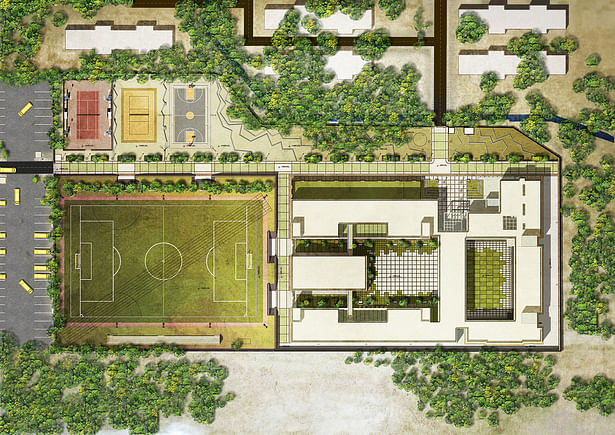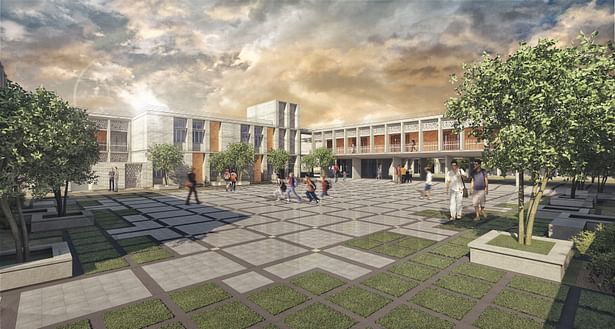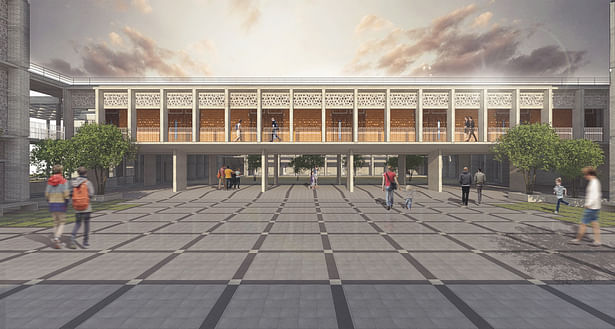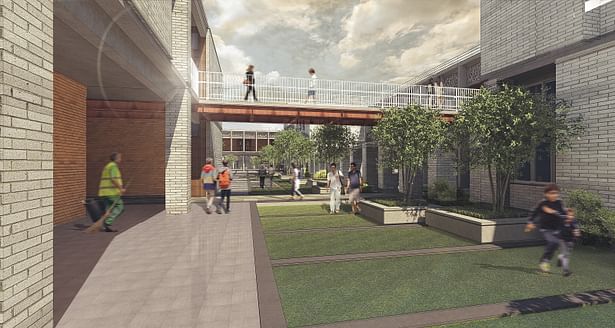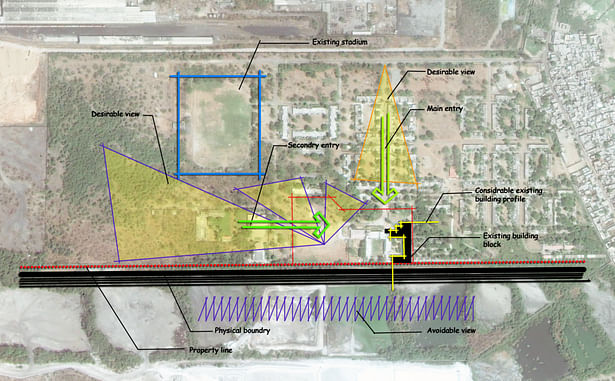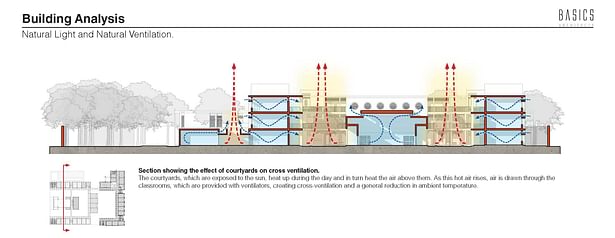
New Delhi, IN
The Master Plan has been approached by modulating Buildings Blocks to create a interesting flow of Open Spaces. These spaces not only add an experiential value but more importantly, allow children to freely interact. This stems from our belief that modern day schools, apart from “Academics”, also need to focus on “Health & Leisure” for Holistic Development of Children. The courts and the buildings themselves have been scaled down to provide a comfortable environment. This is further emphasized by the softness of the building materials used in the exterior facades.
The school has been designed with Sustainability as a core principle. The entire school was constructed using Waste Stone from nearby Quarries, providing a cheap building material. The thick stone masonry walls increase insulation and help reduce heat gain, providing a comfortable indoor environment protected from the hot climate of Rajasthan. This has also helped avoid expensive, energy-guzzling air conditioning systems.
Climatic response was also an important consideration in the harsh hot and dry climate of Kota. The blocks are placed to ensure maximum shading in summers. Classrooms have been designed with recessed windows for shading, ventilators to allow cross-ventilation and light shelves for day lighting.
Material and climate were the driving forces behind the building design. Taking cues from the existing stone masonry buildings on site, the new building was constructed using waste stone from nearby quarries, locally known as ‘dabri’ stone, providing a cheap building material. The building vocabulary was developed using stone and exposed concrete, keeping in mind the strong local context. These are zero-maintenance materials thus reducing the life-cycle cost of the building. Thick stone masonry also provides good insulation from the harsh heat experienced in this part of Rajasthan. Locally sourced stone, such as Kota stone, was used for all floor finishes and fly-ash from a local factory was used for filling under the floors.
The planning of the building revolves around a large open green and a smaller courtyard. Open corridors and the use of ventilators allow for natural cross ventilation. Deeply recessed windows and shading devices protect the interiors from direct sunlight. Adequate windows in the classrooms and skylights in the corridors ensure that there is no need for artificial lighting during the day. Ramps, lifts and tactile paving were installed to make the building disabled-friendly.
Status: Under Construction
Location: Kota, IN
Firm Role: Architecture Design, Master Planning
